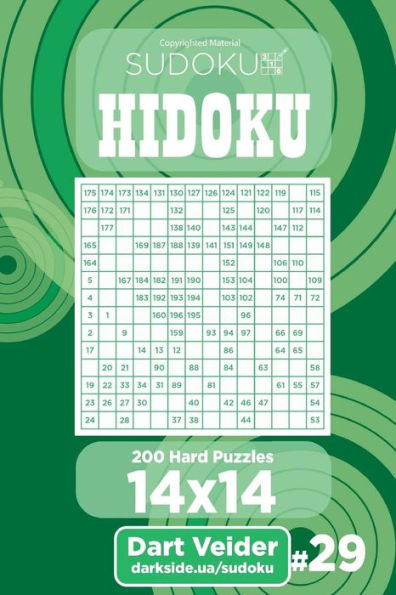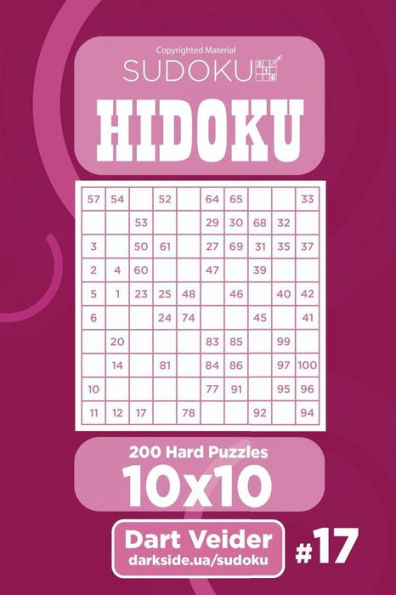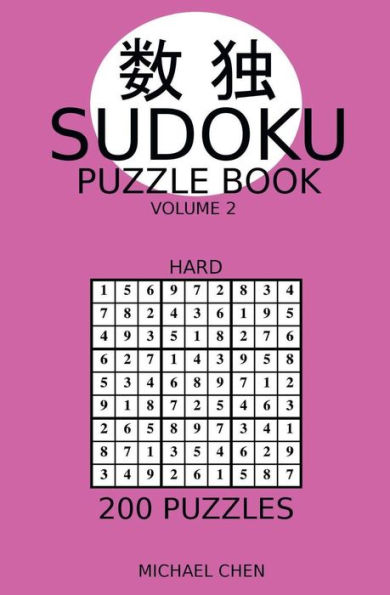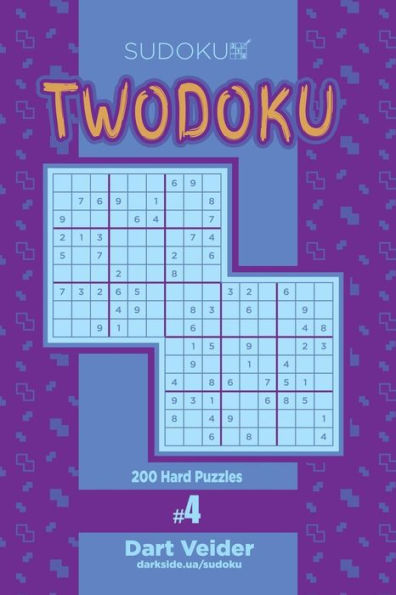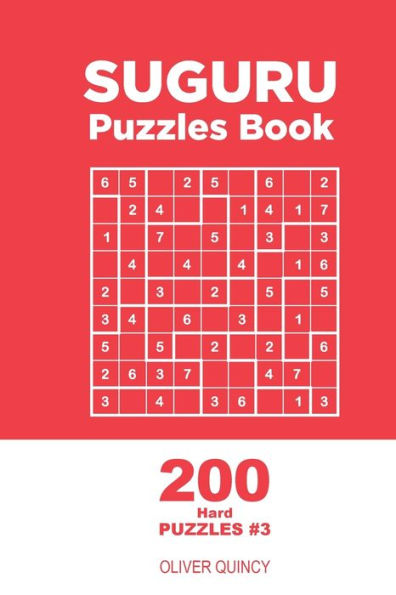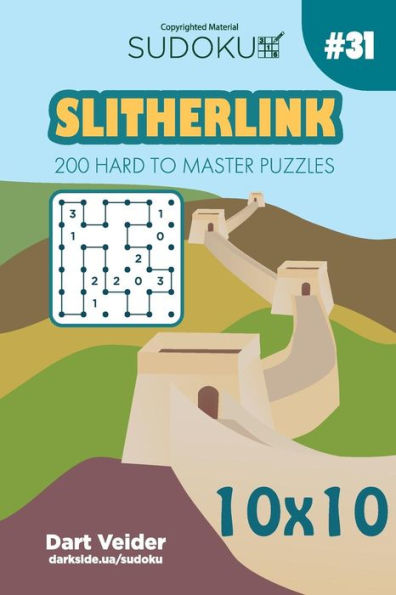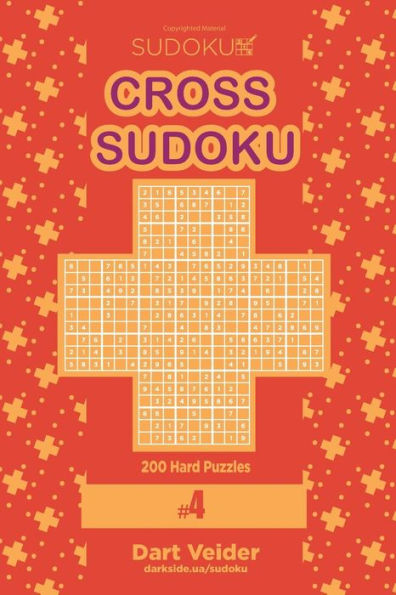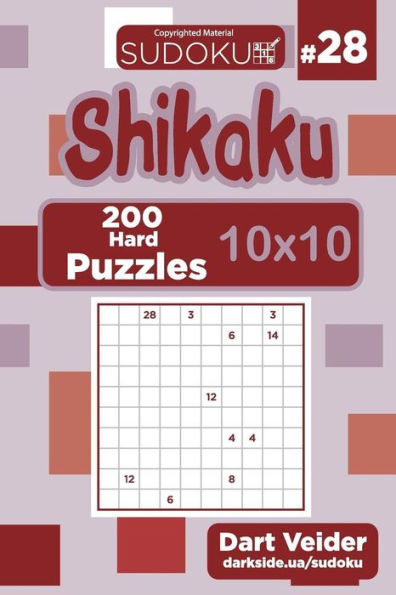Home
Hard Puzzles Book - Skyscrapers, Slitherlink, Straights, Hidoku - 200 Hard Puzzles
Barnes and Noble
Loading Inventory...
Hard Puzzles Book - Skyscrapers, Slitherlink, Straights, Hidoku - 200 Hard Puzzles
Current price: $8.99
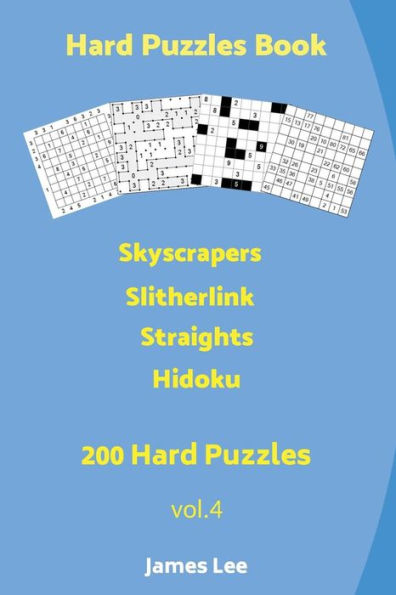
Barnes and Noble
Hard Puzzles Book - Skyscrapers, Slitherlink, Straights, Hidoku - 200 Hard Puzzles
Current price: $8.99
Loading Inventory...
Size: OS
*Product information may vary - to confirm product availability, pricing, shipping and return information please contact Barnes and Noble
Skyscrapers
Each puzzle consists of an NxN grid with some clues along its sides. The object is to place a skyscraper in each square, with a height between 1 and N, so that no two skyscrapers in a row or column have the same number of floors. In addition, the number of visible skyscrapers, as viewed from the direction of each clue, is equal to the value of the clue. Note that higher skyscrapers block the view of lower skyscrapers located behind them.
Slitherlink
Slitherlink is a logic puzzle is played on a rectangular lattice of dots. Some of the squares formed by the dots have numbers inside them. The objective is to connect horizontally and vertically adjacent dots so that the lines form a simple loop with no loose ends. In addition, the number inside a square represents how many of its four sides are segments in the loop.
Straights
The solver is given a 9x9 grid, partially divided by black cells into compartments. Each compartment, vertically or horizontally, must contain a straight - a set of consecutive numbers, but in any order. For example: 7, 6, 4, 5 is valid, but 1, 3, 8, 7 is not.
Like sudoku, the solver must fill the remaining white cells with numbers 1 to 9 (or 1 to n in puzzles with N cells per side) such that each row and column contains unique digits. Whereas Sudoku has the additional constraint of 3x3 boxes, in Str8ts rows and columns are divided by blacks cells. Additional clues are set in some of the black cells - these numbers remove that digit as an option in the row and column. Such digits do not form part of any straight.
Hidoku
Fill the empty cells in such a way they build a chain of consecutive numbers from 1 to the marked largest number. All cells with consecutive numbers must touch each other either horizontally, vertically or diagonally.
Each puzzle consists of an NxN grid with some clues along its sides. The object is to place a skyscraper in each square, with a height between 1 and N, so that no two skyscrapers in a row or column have the same number of floors. In addition, the number of visible skyscrapers, as viewed from the direction of each clue, is equal to the value of the clue. Note that higher skyscrapers block the view of lower skyscrapers located behind them.
Slitherlink
Slitherlink is a logic puzzle is played on a rectangular lattice of dots. Some of the squares formed by the dots have numbers inside them. The objective is to connect horizontally and vertically adjacent dots so that the lines form a simple loop with no loose ends. In addition, the number inside a square represents how many of its four sides are segments in the loop.
Straights
The solver is given a 9x9 grid, partially divided by black cells into compartments. Each compartment, vertically or horizontally, must contain a straight - a set of consecutive numbers, but in any order. For example: 7, 6, 4, 5 is valid, but 1, 3, 8, 7 is not.
Like sudoku, the solver must fill the remaining white cells with numbers 1 to 9 (or 1 to n in puzzles with N cells per side) such that each row and column contains unique digits. Whereas Sudoku has the additional constraint of 3x3 boxes, in Str8ts rows and columns are divided by blacks cells. Additional clues are set in some of the black cells - these numbers remove that digit as an option in the row and column. Such digits do not form part of any straight.
Hidoku
Fill the empty cells in such a way they build a chain of consecutive numbers from 1 to the marked largest number. All cells with consecutive numbers must touch each other either horizontally, vertically or diagonally.
Skyscrapers
Each puzzle consists of an NxN grid with some clues along its sides. The object is to place a skyscraper in each square, with a height between 1 and N, so that no two skyscrapers in a row or column have the same number of floors. In addition, the number of visible skyscrapers, as viewed from the direction of each clue, is equal to the value of the clue. Note that higher skyscrapers block the view of lower skyscrapers located behind them.
Slitherlink
Slitherlink is a logic puzzle is played on a rectangular lattice of dots. Some of the squares formed by the dots have numbers inside them. The objective is to connect horizontally and vertically adjacent dots so that the lines form a simple loop with no loose ends. In addition, the number inside a square represents how many of its four sides are segments in the loop.
Straights
The solver is given a 9x9 grid, partially divided by black cells into compartments. Each compartment, vertically or horizontally, must contain a straight - a set of consecutive numbers, but in any order. For example: 7, 6, 4, 5 is valid, but 1, 3, 8, 7 is not.
Like sudoku, the solver must fill the remaining white cells with numbers 1 to 9 (or 1 to n in puzzles with N cells per side) such that each row and column contains unique digits. Whereas Sudoku has the additional constraint of 3x3 boxes, in Str8ts rows and columns are divided by blacks cells. Additional clues are set in some of the black cells - these numbers remove that digit as an option in the row and column. Such digits do not form part of any straight.
Hidoku
Fill the empty cells in such a way they build a chain of consecutive numbers from 1 to the marked largest number. All cells with consecutive numbers must touch each other either horizontally, vertically or diagonally.
Each puzzle consists of an NxN grid with some clues along its sides. The object is to place a skyscraper in each square, with a height between 1 and N, so that no two skyscrapers in a row or column have the same number of floors. In addition, the number of visible skyscrapers, as viewed from the direction of each clue, is equal to the value of the clue. Note that higher skyscrapers block the view of lower skyscrapers located behind them.
Slitherlink
Slitherlink is a logic puzzle is played on a rectangular lattice of dots. Some of the squares formed by the dots have numbers inside them. The objective is to connect horizontally and vertically adjacent dots so that the lines form a simple loop with no loose ends. In addition, the number inside a square represents how many of its four sides are segments in the loop.
Straights
The solver is given a 9x9 grid, partially divided by black cells into compartments. Each compartment, vertically or horizontally, must contain a straight - a set of consecutive numbers, but in any order. For example: 7, 6, 4, 5 is valid, but 1, 3, 8, 7 is not.
Like sudoku, the solver must fill the remaining white cells with numbers 1 to 9 (or 1 to n in puzzles with N cells per side) such that each row and column contains unique digits. Whereas Sudoku has the additional constraint of 3x3 boxes, in Str8ts rows and columns are divided by blacks cells. Additional clues are set in some of the black cells - these numbers remove that digit as an option in the row and column. Such digits do not form part of any straight.
Hidoku
Fill the empty cells in such a way they build a chain of consecutive numbers from 1 to the marked largest number. All cells with consecutive numbers must touch each other either horizontally, vertically or diagonally.
